The Day of Atonement
Jacob Kramer
1919
Image
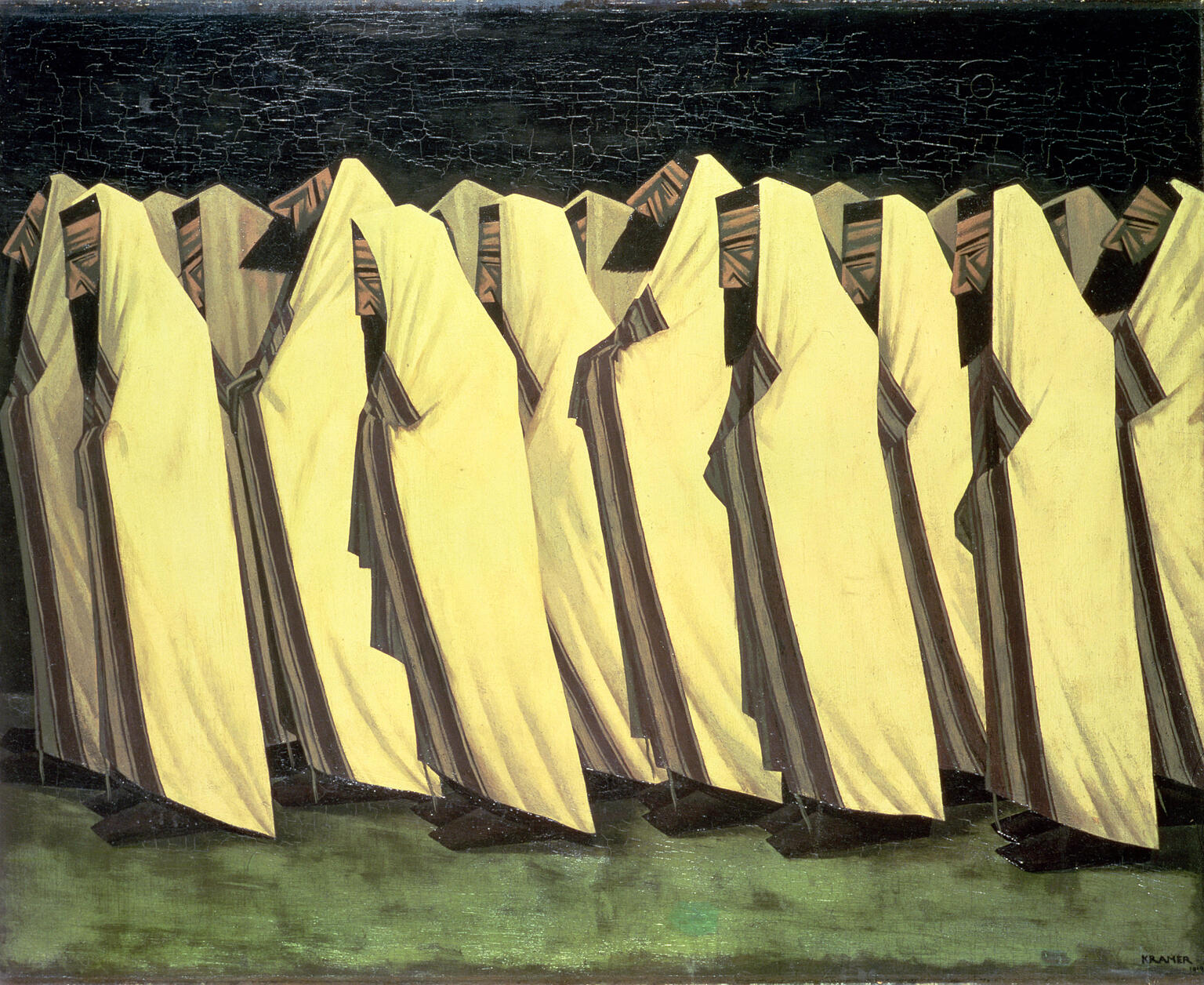
Engage with this Source
Restricted
Image
Places:
Leeds, United States of America
Creator Bio
Jacob Kramer
1892–1962
The painter Jacob Kramer was born in Ukraine and moved with his family to Leeds in 1900. He studied at the Leeds School of Art from 1907 to 1913 and at the Slade School of Art in London from 1913 to 1914. His paintings were included in the Jewish section of the landmark 1914 Whitechapel exhibition of modern art. His early works, including his later masterpiece Day of Atonement, were strikingly original examples of English expressionism. In the 1920s he returned to Leeds and his career took a downturn. He lived in alcohol-soaked poverty, producing second-rate portraits of local figures.
You may also like
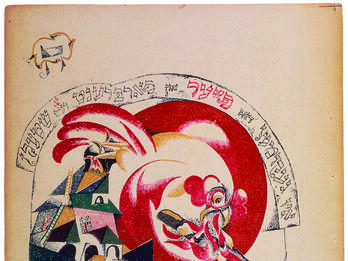
The Fire Came and Burnt the Stick
This graphic depiction of the Passover song “Had Gadya” (“Tale of a Goat”) juxtaposes the collective memory of the exodus from Egypt with Soviet revolutionary art and politics.
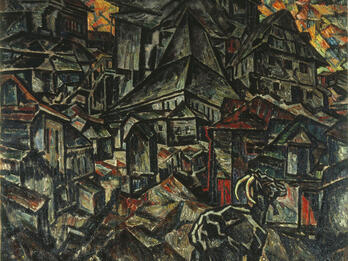
Destruction of the Ghetto
In 1919, during a civil war raging in Ukraine, a wave of pogroms swept the area around Kiev. In one of them, Manievich’s son was killed, and this painting expresses his grief. The destroyed homes and…
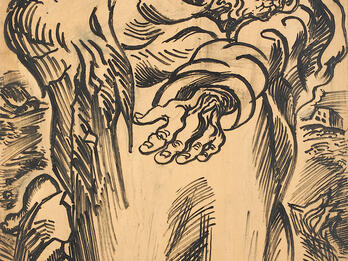
The Prophet
Shortly before World War I, Meidner was active in a circle of Berlin artists called Die Pathetiker (The Sorrowful Ones), who were early practitioners of what later came to be known as expressionism…
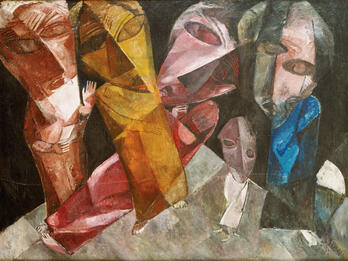
Eternal Wanderers
At first Eternal Wanderers seems like an abstract assemblage of colorful shapes. A closer look, however, reveals a group of people, young and old, with mask-like faces, teetering on tilting ground…
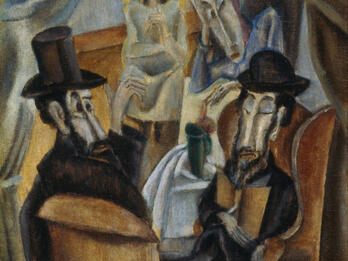
Sabbath
Weber was one of the few American modernists to paint religious subjects. He painted Sabbath around the time he became associated with a group of American Yiddish writers called Di yunge (The Young…
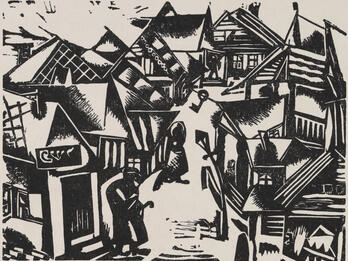
Shtetl
This woodcut was published in Petrograd (Saint Petersburg) after Aronson had left the Soviet Union. In it, Aronson combined elements of cubo-futurism and constructivism. Several figures can be spotted…

